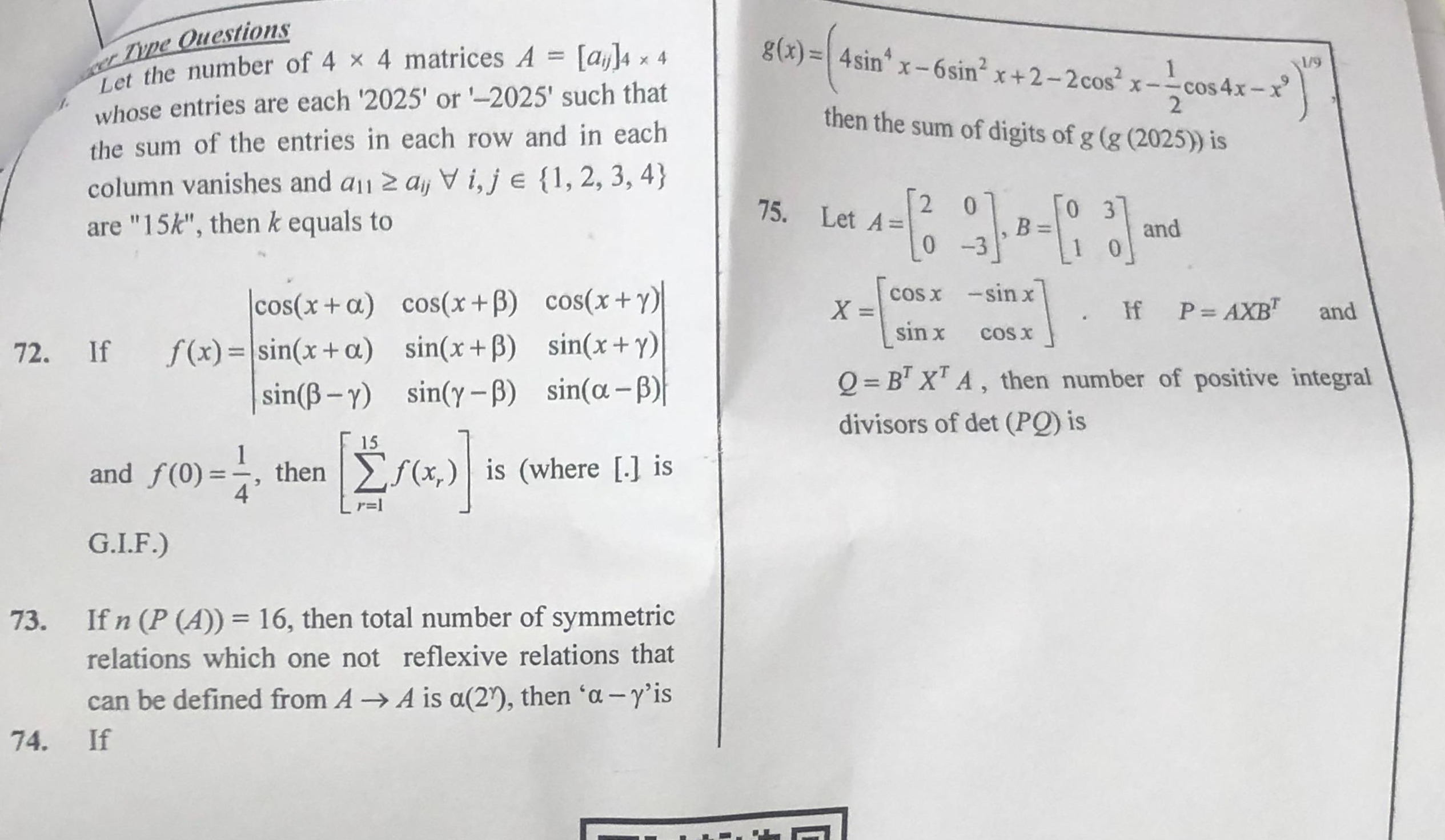Question
Question: Let the number of $4 \times 4$ matrices $A = [a_{ij}]_{4 \times 4}$ whose entries are each '2025' or...
Let the number of 4×4 matrices A=[aij]4×4 whose entries are each '2025' or '-2025' such that the sum of the entries in each row and in each column vanishes and a11≥aij∀i,j∈{1,2,3,4} are "15k", then k equals to

2
3
4
5
2
Solution
The problem asks us to find the number of 4×4 matrices A=[aij]4×4 such that:
- Entries aij are either '2025' or '-2025'. Let c=2025. So aij∈{c,−c}.
- The sum of entries in each row vanishes: ∑j=14aij=0 for i=1,2,3,4.
- The sum of entries in each column vanishes: ∑i=14aij=0 for j=1,2,3,4.
- a11≥aij for all i,j∈{1,2,3,4}.
From condition 1, if the sum of entries in a row (or column) is zero, and each entry is either c or −c, then there must be an equal number of c's and −c's. Since there are 4 entries in a row/column, each row and each column must contain exactly two c's and two −c's.
Condition 4 states a11≥aij for all i,j. Since aij can only be c or −c, this implies that a11 must be the maximum possible value, which is c. So, a11=c=2025.
We need to count the number of 4×4 matrices with entries from {c,−c} such that:
- Each row has two c's and two −c's.
- Each column has two c's and two −c's.
- a11=c.
This problem is equivalent to counting 4×4 binary matrices (where 1 represents c and 0 represents −c) with row and column sums equal to 2, subject to the constraint that the entry in the first row and first column is 1.
The total number of 4×4 binary matrices with row and column sums equal to 2 is known to be 90. We need to find the number of these matrices where the top-left element (a11) is 1.
Let's consider the case where a11=1. Row 1 must have one more '1' and two '0's. There are (13)=3 ways to place the second '1' in the first row. Column 1 must have one more '1' and two '0's. There are (13)=3 ways to place the second '1' in the first column.
The number of 4×4 binary matrices with row and column sums equal to 2, and with a11=1, is 30.
The problem states that the number of such matrices is 15k. Therefore, we have the equation: 30=15k
Solving for k: k=1530 k=2
The value of k is 2.
